SolusVM Extended Reseller For WHMCS
Contents |
About SolusVM Extended Reseller For WHMCS
| SolusVM Extended Reseller For WHMCS is a great solution for every SolusVM server owner who have their own resellers. Module allows you to automatically create and provision ready products for your resellers. |
- Features Included:
| ✔ Create Reseller |
| ✔ Terminate Reseller |
| ✔ View All Possible Server Resources |
| ✔ Control Panel Button |
| ✔ Dynamic Server Resources Setup With Configurable Options |
- Additional Functionality:
| ✔ Combined With DNS Manager For WHMCS - Supports PowerDNS (read more) |
| ✔ Combined With Advanced Billing For WHMCS Module - Supports Server Resource Usage Billing (read more) |
| ✔ Multi-Language Support |
| ✔ Supports WHMCS V5 and Later |
Installation and Configuration
| In this tutorial we will show you how to successfully install SolusVM Extended Reseller For WHMCS. We will guide you step by step through the whole installation and configuration process. |
| 1. Log in to your client area and download SolusVM Extended Reseller For WHMCS. |
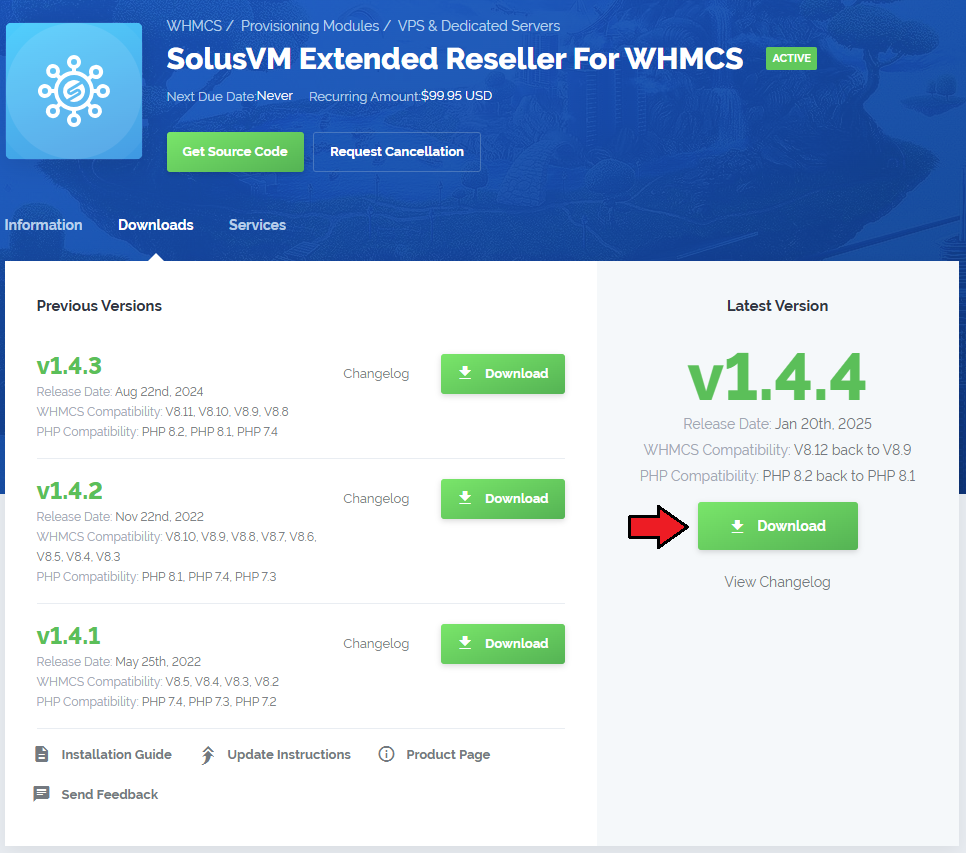
|
| 2. Upload and extract the module into the main WHMCS directory. |
| Files in your WHMCS directory should look like this. |

|
| 3. When you install SolusVM Extended Reseller for the first time you have to rename 'license_RENAME.php' file. |
| File is located at 'modules/servers/solusvmExtendedReseller/license_RENAME.php' . Rename it from 'license_RENAME.php' to 'license.php' . |
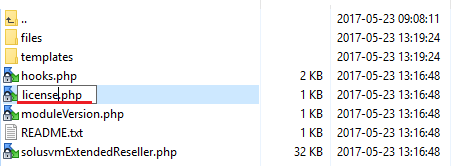
|
| 4. In order to configure your license key you have to edit a previously renamed 'license.php' file. |
| Enter your licence key between quotation marks as presented on the following screen. You can find your license key at your client area → 'My Products' . |

|
| 5. Now we will show you how to configure a new product. First, log in to your SolusVM admin area, go to 'CONFIGURATION' → 'API Access' and add API User. |

|
| 6. Enter your current IP and once again click on 'Add API User' button. |

|
| 7. Now log in to your WHMCS admin area. Press 'Setup' → 'Products/Services' → 'Servers' . |
| Afterwards press 'Add New Server' . |
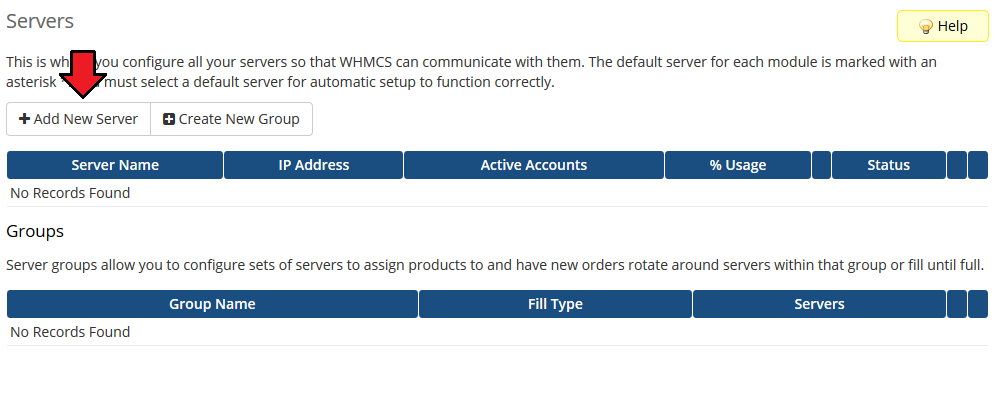
|
| 8. Enter your server name and IP address. Next, enter your API User ID into 'Username' field and your API User Key into 'Password' field. Choose 'SolusvmExtendedReseller ' from a dropdown menu and press 'Save Changes' . |
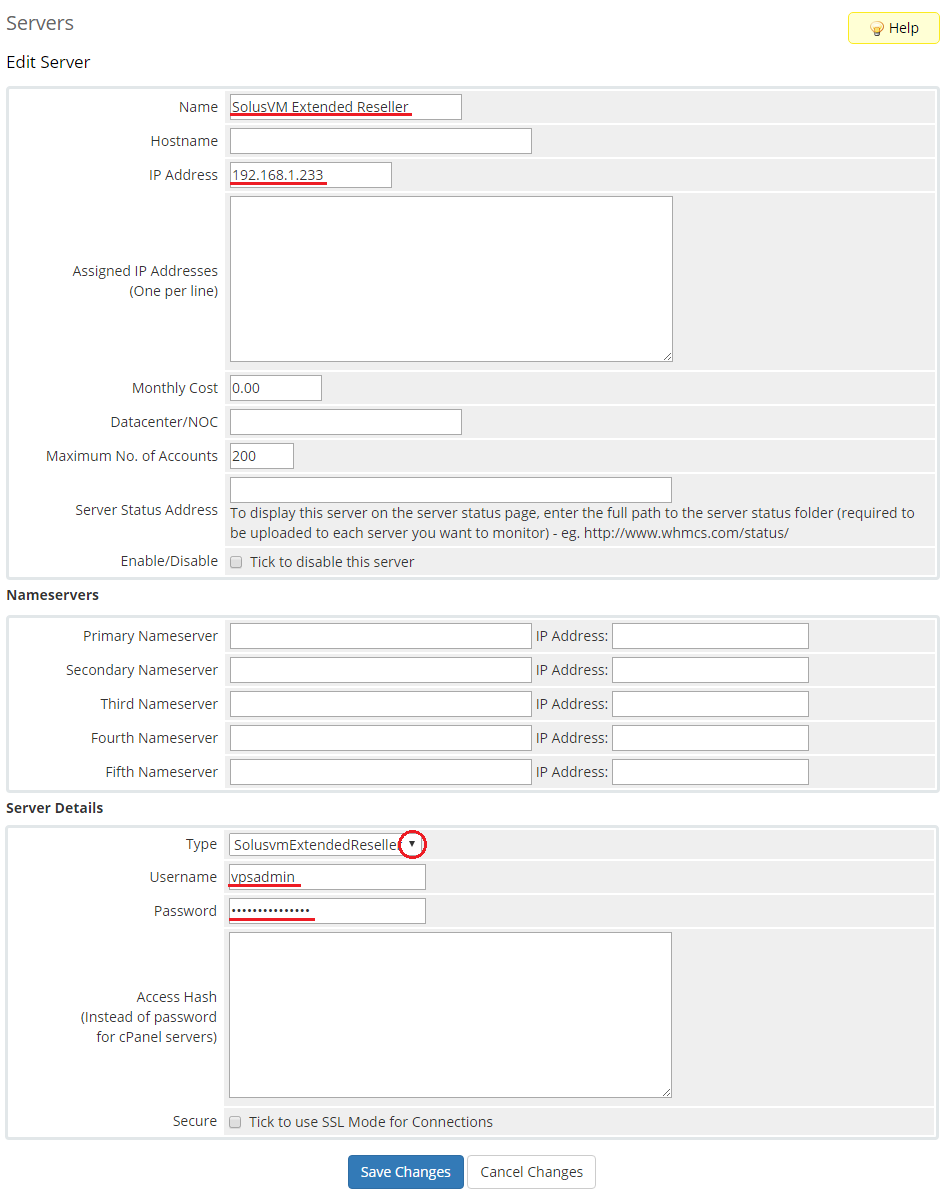
|
| 9. After you configure your server correctly, you will see a following screen. |
| Test your connection through pressing on 'Test Connection' . Now you need to create a new group for your server. For that purpose press 'Create New Group' . |
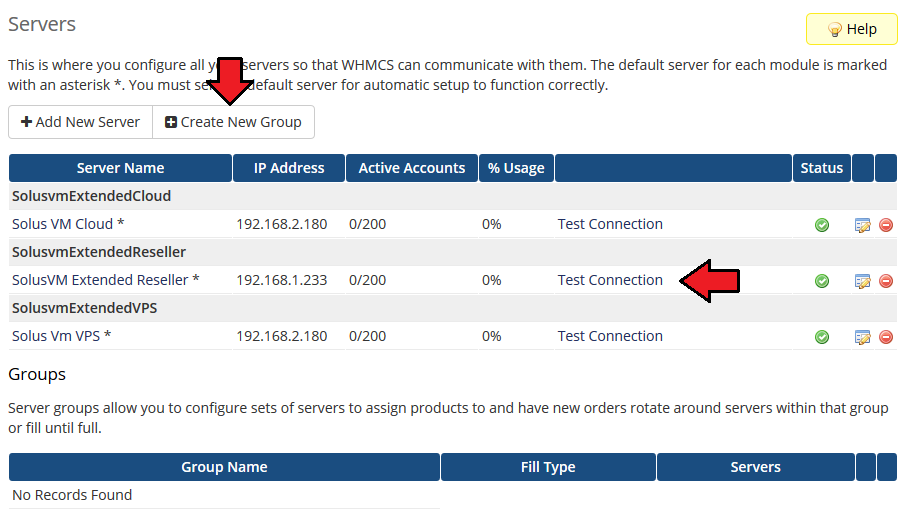
|
| 10. Enter name, click on your previously created server, press 'Add' then press 'Save Changes' . |
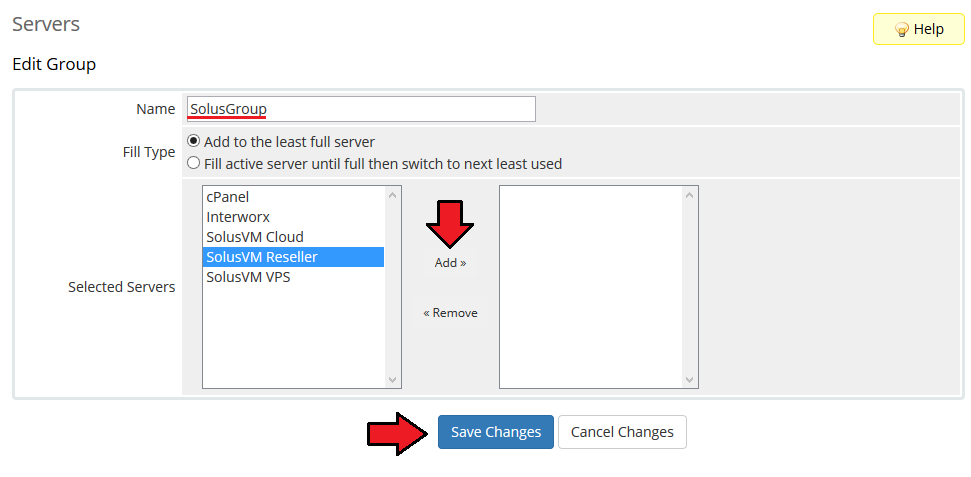
|
| 11. In order to create and configure product click on 'Setup' → 'Products/Services' → 'Products/Services' . |
| If you don't have a product group, click on 'Create a New Group' . If you do, simply go to step 13. |

|
| 12. Enter product group name, choose order form template and press 'Save Changes' . |
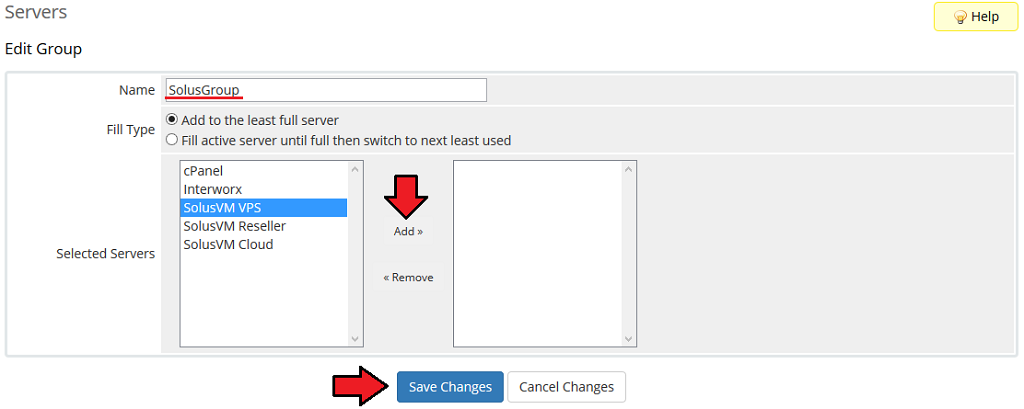
|
| 13. When you have a product group, you can create your product and assign it with SolusVM Extended Reseller. If you already have a product, go to step 15. |
| To create a product click on 'Create a New Product' . |

|
| 14. Afterwards choose your product type and product group from a dropdown menus, enter your product name and press 'Continue' . |

|
| 15. Now go to 'Module Settings' section, choose both 'SolusvmExtendedReseller' and your previously created server group from a dropdown menus. After you press 'Save Changes' , all the configuration options will load below. |
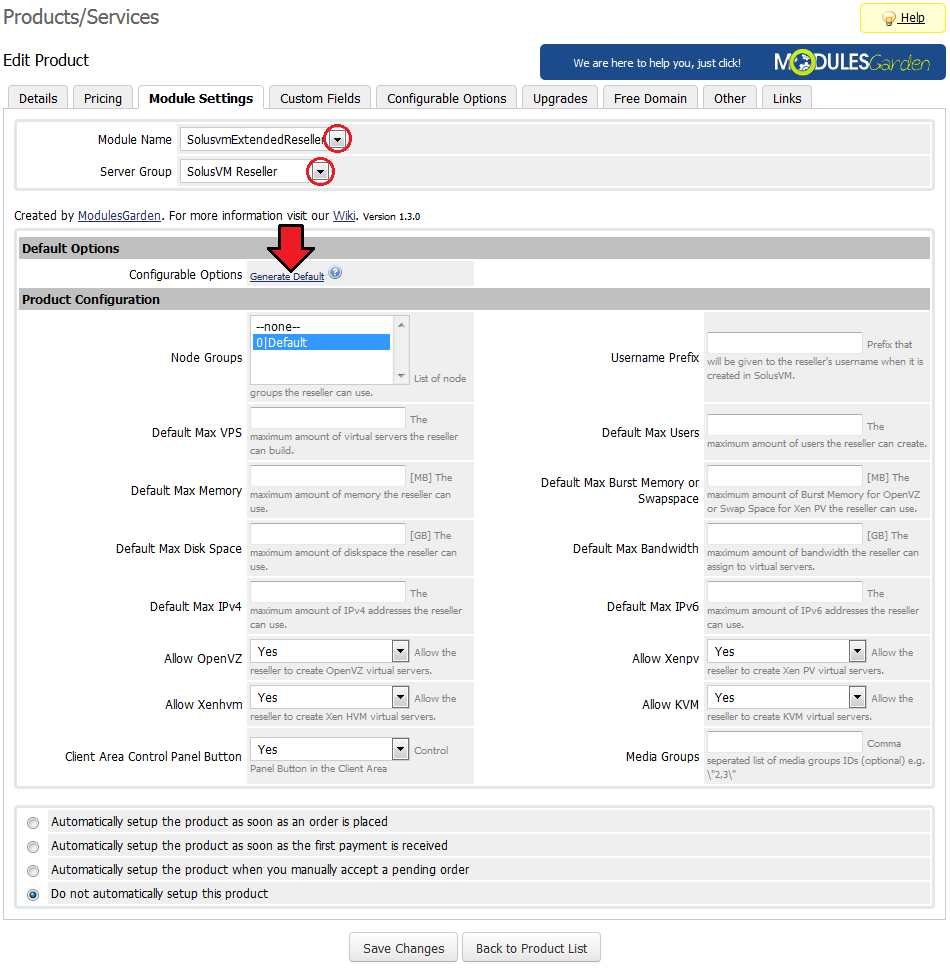
|
| 16. Configuration of the product is grouped into 'Product Configuration' section. In Product Configuration you can select the functionalities you want to offer your resellers and set servers resources limit. |
| File:SR12.5.png |
| 17. With configurable options you can allow your customers to place orders perfectly tailored to their needs. Our module offers the following configurable options: |

|
| You have just finished the installation and configuration of the module. From this moment your customers can start to place orders! |
Management
| SolusVM Extended Reseller For WHMCS allows your resellers to monitor server resources and quickly access their reseller control panels. |
Interface
| Now let's check the interface of the module in your WHMCS client area. As you can see, module displays in one place all the important information for your resellers. |
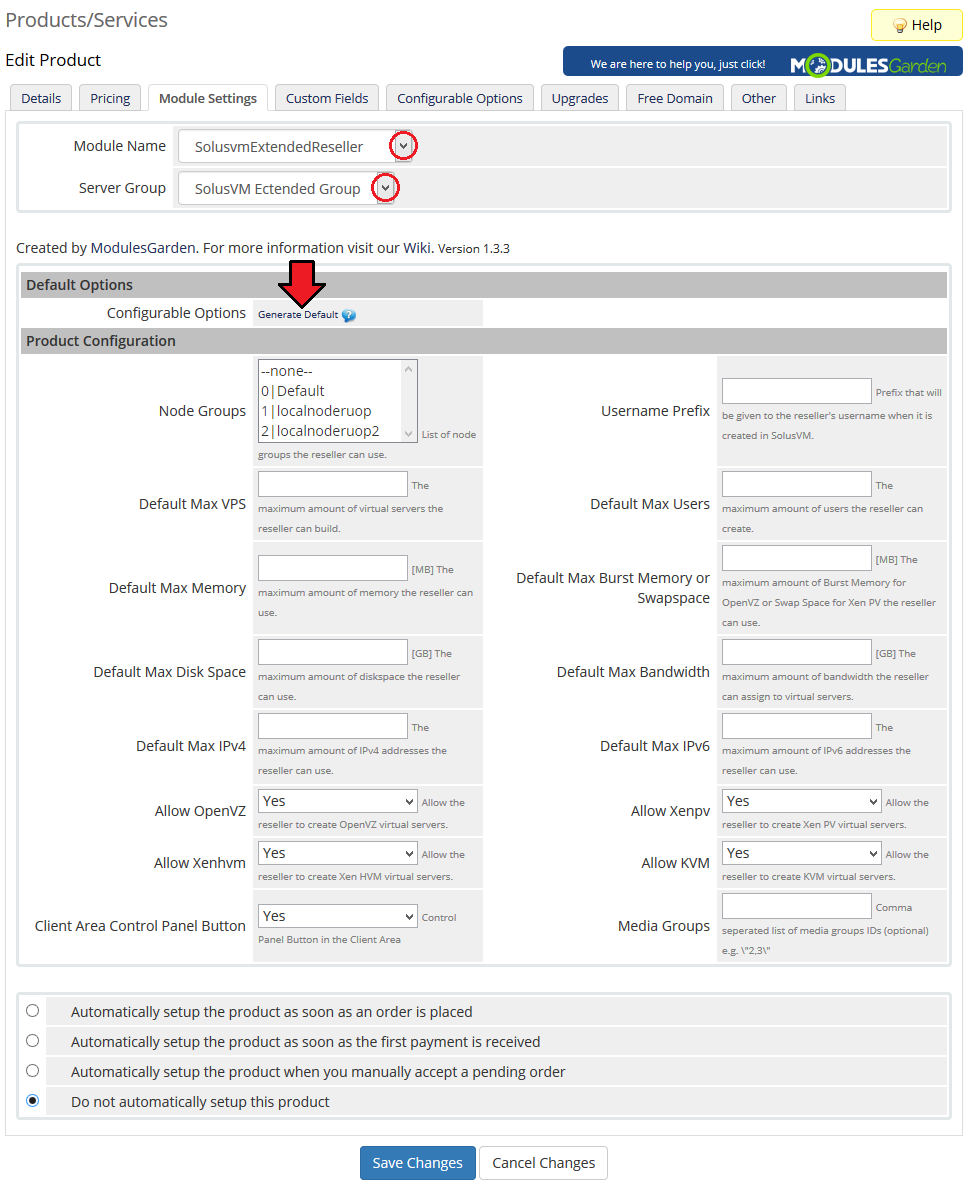
|
| You can monitor and manage each product from your WHMCS admin area. |
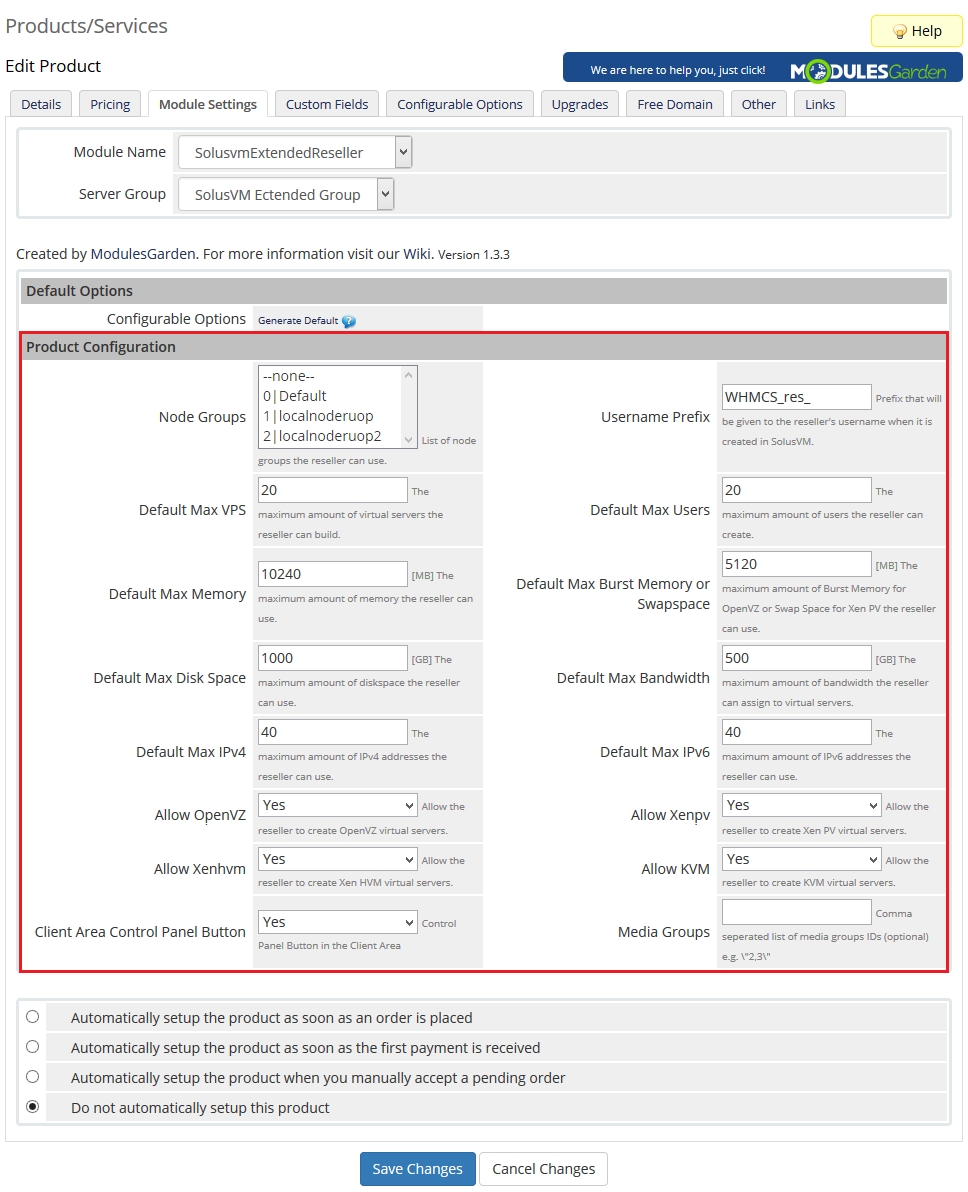
|
| Your customers can also quickly access their panels through clicking on 'Control Panel' button. |
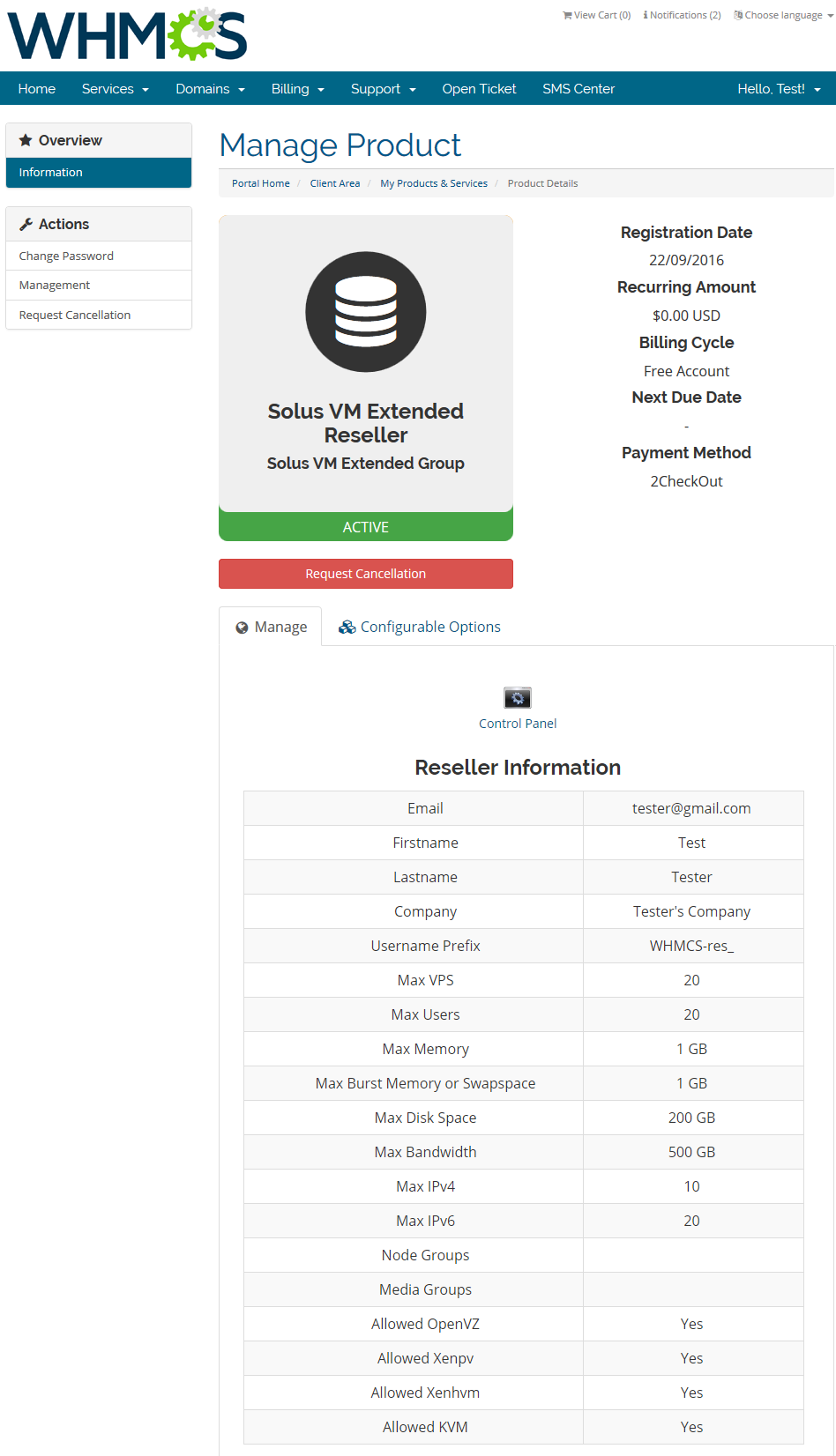
|
| Voila! One click from WHMCS client area and we are inside Reseller Control Panel. |
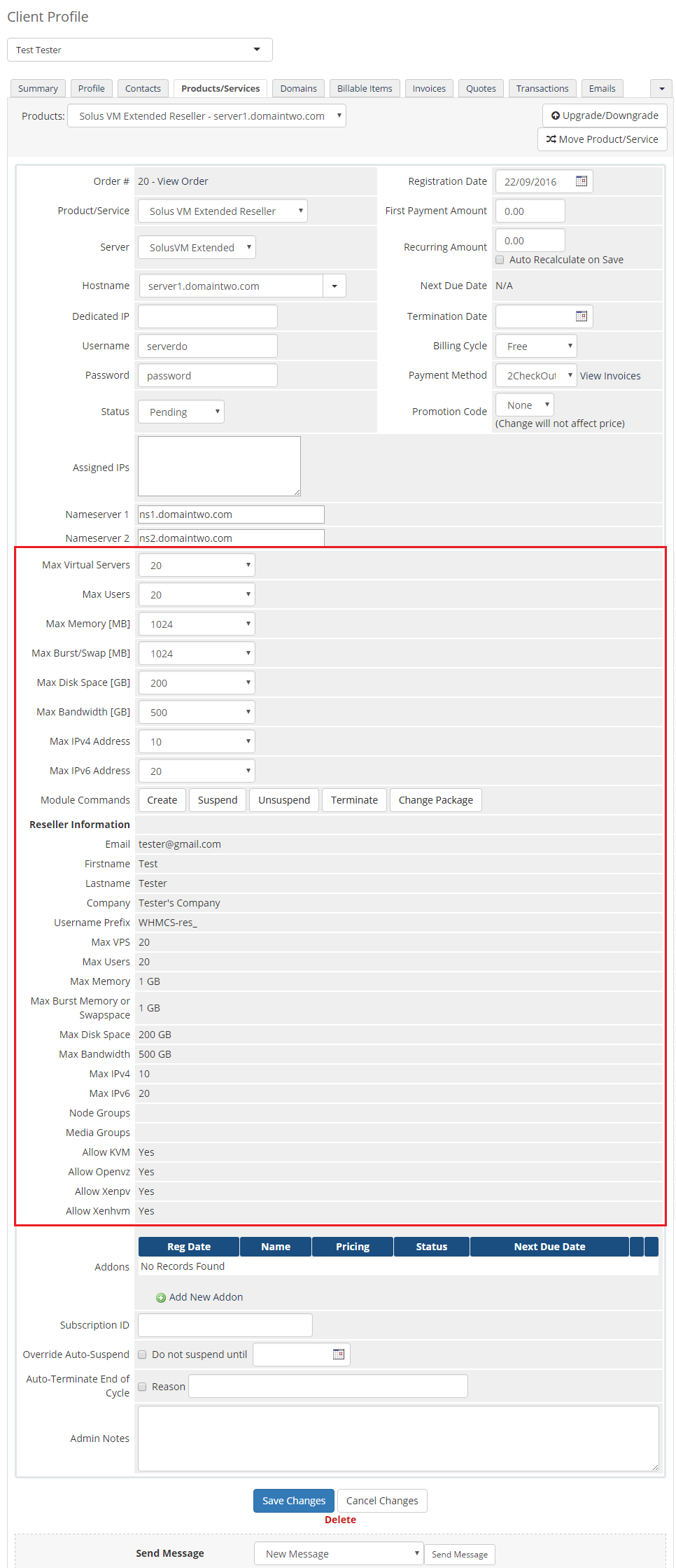
|
Management of DNS
| When you combine SolusVM Extended Reseller For WHMCS With DNS Manager For WHMCS, your clients will be able to manage PowerDNS from the client area. DNS Manager For WHMCS will allow your customers to manage DNS zones, records and ReverseDNS. |
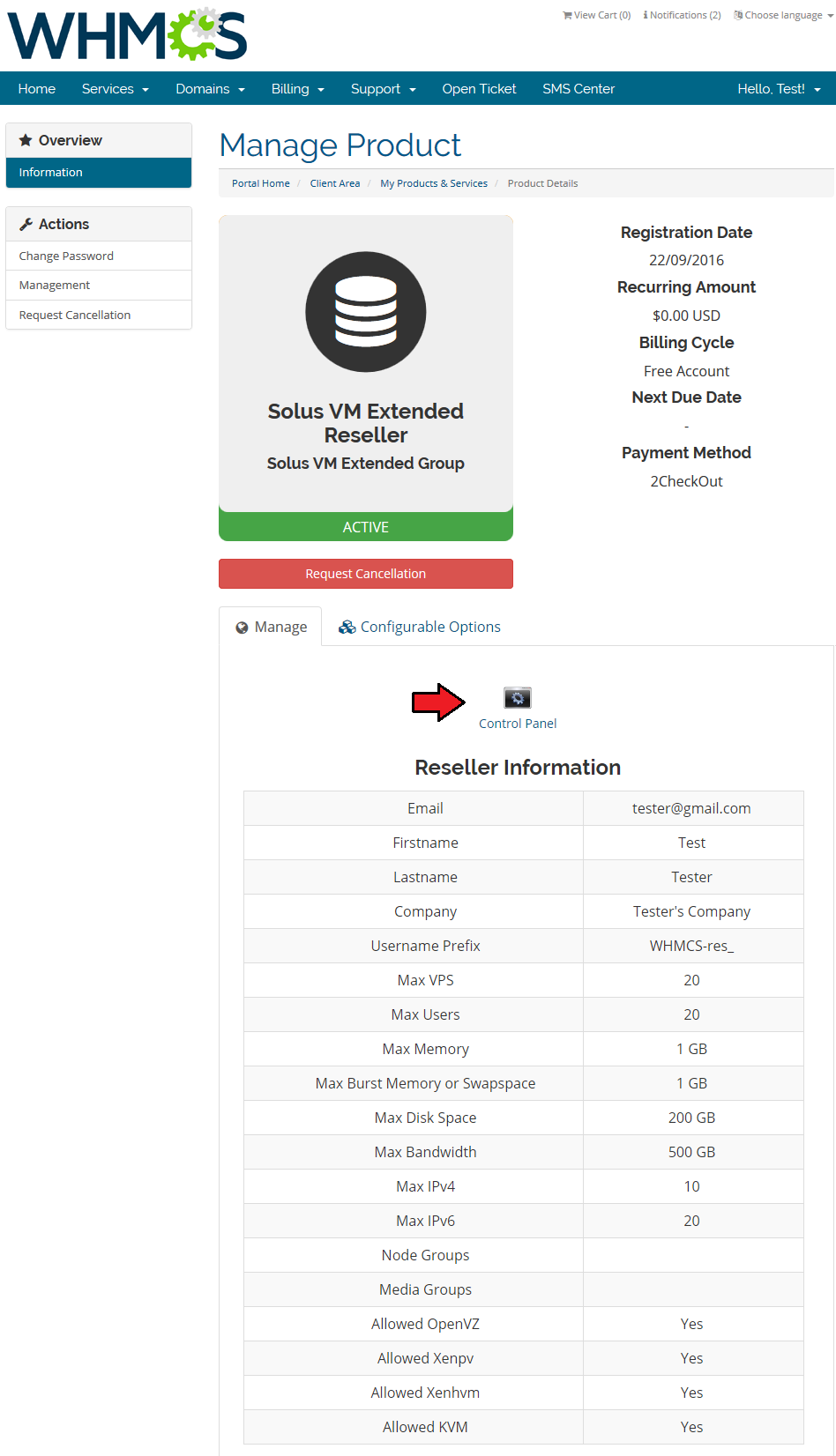
|
| To provide a DNS management in the client area simply use this address 'your_whmcs_url/clientarea.php?managedns' . Replace 'your_whmcs_url' with address of your whmcs directory. Dependant on your previously chosen settings, your customers will be able to add, edit and remove DNS zones and records. |
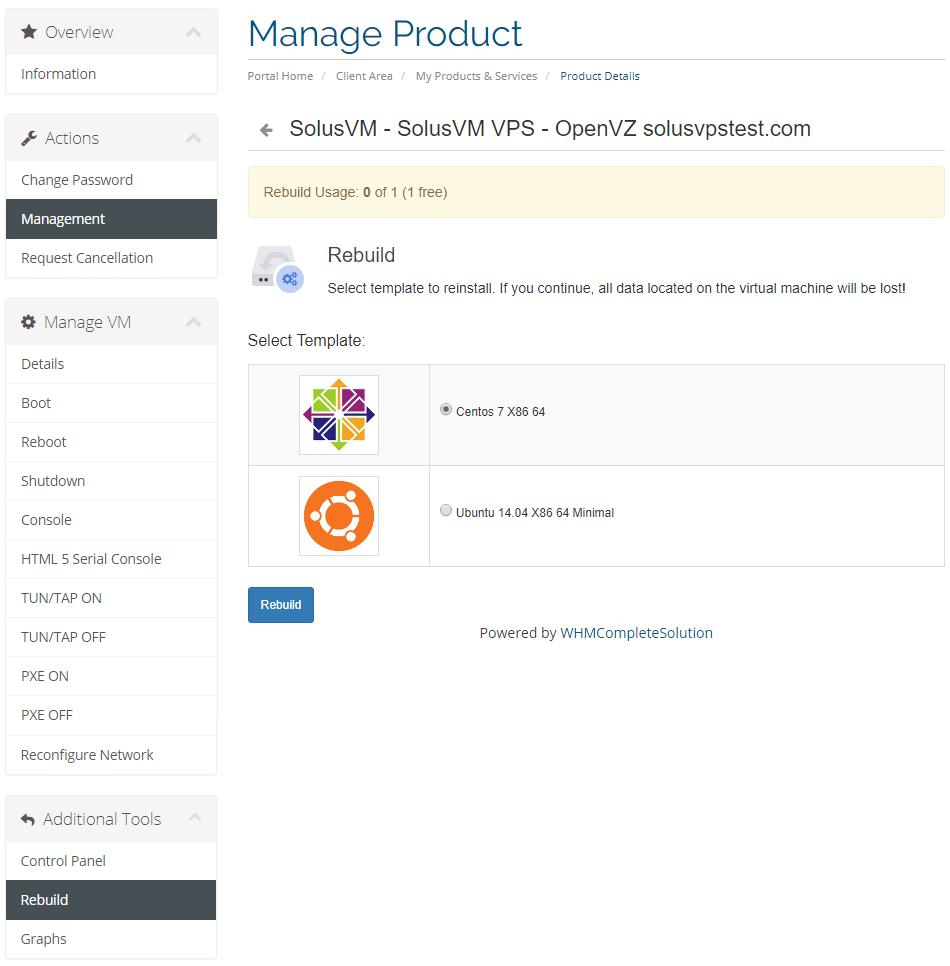
|
| Module will also allow your customers to add, edit and remove Reverse DNS zones and records. |
| File:SV25.png |
Tips
| 1. We made every effort to make our module as easy to install, configure and use, as possible. Therefore we paid special attention to displayed messages. Read carefully each message, follow the instructions and you shall have no problems with using the module. |
| 2. Operations performed on the virtual servers are not executed immediately. Give your SolusVM server some time for processing the request and execution of operation. |
Common Problems
| 1. The vast majority of problems are connected with misconfigured SolusVM server or misconfigured servers/products in your WHMCS. First, make sure that your SolusVM server has properly configured virtual servers, nodes, node groups, templates, plans and API access. |
| 2. When you have problems with connection, check whether your SELinux or firewall is not blocking ports. |